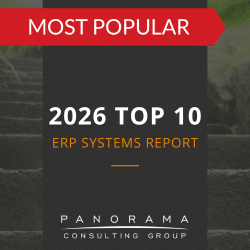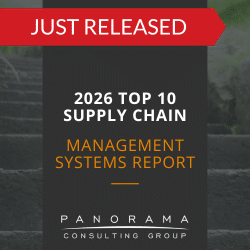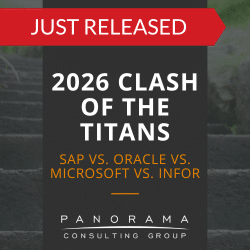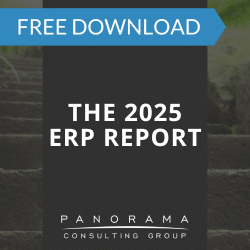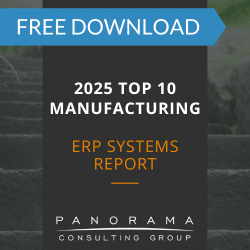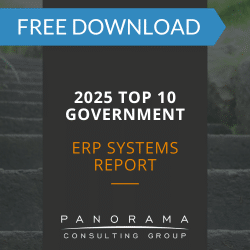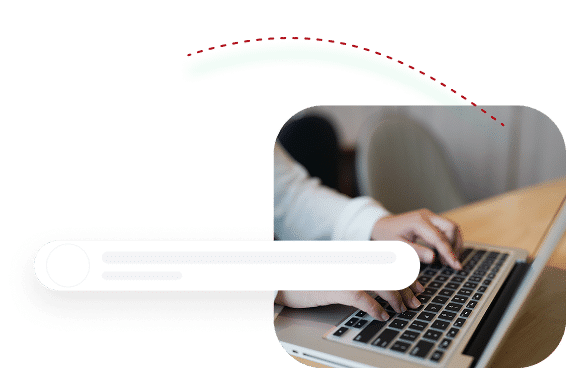- Behavioral change management focuses on habit replacement, not just skill development, during ERP rollouts.
- User behavior change in digital transformation often fails when legacy systems continue to shape daily workflows.
- Legacy software dependence persists because of habit loops reinforced by rewards (familiarity, speed, and perceived control).
- New ERP processes succeed when behavioral triggers are embedded into daily routines and reinforced consistently.
Many executives cannot grasp how psychologically attached their employees are to their existing workflows. Even if they had the desire to change, their brains might not let them.
If a familiar icon is on their screen, they’re going to click it—even if that program has been deemed “legacy.” The click is subconscious. It is a habit.
Behavioral change management is about rewiring user habits to:
- Change the way employees perform tasks.
- Drive ERP adoption.
- Enable any other organizational shift or transformation.
Executives often focus on capabilities: Can our people run the new process? Do they know the steps? But in many digital transformations, user behavior is actually the limiting factor.
ERP Training Plan Success Story
We helped this manufacturer implement an ERP training strategy to increase user adoption of its new ERP system.
Why Users Don’t Change—Even When They’re Trained To
Our ERP expert witnesses often analyze cases where legacy software dependence persists even after the go-live date. This can result in compliance breakdowns, reporting gaps, and productivity losses that leadership didn’t anticipate.
If your ERP users still default to spreadsheets and workarounds after go-live, it’s not because they hate you. Here’s why you shouldn’t take it personally:
1. Legacy Software Dependence is Psychological—Not Just Operational
Many organizations treat legacy system dependence like a technical hurdle. “Once we decommission the old system, users will move on.”
That rarely happens. Legacy systems are familiar territory that reward users with shortcuts, predictability, and informal workarounds that feel like control.
Rewards are a key driver of habits. They reinforce the habit loop by giving users immediate feedback—like faster task completion or a sense of control—even if the behavior is misaligned with organizational goals.
2. Telling People What to Do Isn’t the Same as Shaping How They Act
Let’s say your team knows how to generate a fulfillment report in your new manufacturing ERP system, but when inventory spikes, they fall back on the Excel tracker they used for years.
This is an example of how behavior under pressure defaults to habit.
Executives often assume that performance gaps reflect skill gaps, but in reality, many post-go-live setbacks stem from behavioral inertia. You’ve installed the new system—but you haven’t uninstalled the old habits.
How to Drive User Behavior Change in Digital Transformation
Once you reframe digital transformation as a behavioral shift, the playbook changes. Success depends less on technical rollout and more on behavioral design: building systems, routines, and incentives that reinforce new habits.
Here’s how to start:
1. Identify the Critical Habits, Not Just the Critical Processes
ERP implementations often prioritize process accuracy—clean data entry, correct transaction flows, adherence to standard operating procedures. But those are outcomes.
Behavioral change management asks: What user behaviors must shift to make those outcomes repeatable?
For example:
- If users keep overriding purchase approvals manually, then behaviors like clicking “approve” without reviewing supporting documentation must shift.
- If warehouse staff continue tracking pallets on paper, then behaviors like grabbing a clipboard instead of using a handheld scanner must shift.
Your change management team should document not just the process design, but the habit design: What needs to happen daily for the system to succeed? This foundation will make behavior change sustainable, regardless of stress, turnover, or competing priorities.
2. Anchor New Habits in Triggers
Behavioral science shows that habits are formed around cues and rewards. To replace old habits, you must create new triggers.
Example: Instead of saying, “Run this inventory report weekly,” you could install a dashboard prompt that nudges supply chain planners every Monday.
User behavior change in digital transformation is about engineering recurring cues that guide behavior, especially during moments of uncertainty or stress.
3. Treat Old Habits as Risk Factors
Habits aren’t based on logic. Especially under stress, people default to what’s practiced—not what’s better. This is why behavioral change management treats old habits as structural risk.
To replace old habits with new habits, you need more than reminders. You need to:
- Disrupt the old loop (e.g., restrict access).
- Replace the behavior with a simpler or more rewarding alternative.
- Reinforce the new habit until it becomes the default.
Expert Insight
Our change management consultants never underestimate the staying power of habits. We address this risk early by mapping legacy behaviors during process design workshops and flagging those likely to resurface under pressure.
4. Measure Behavioral Progress Alongside Technical Milestones
Many ERP leaders track logins and workflows, but surface-level metrics won’t tell you if users are relying on the new system—or just interacting with it.
Instead, you should track metrics like:
- Percentage of users who stopped using legacy systems.
- Frequency of key behavior triggers (e.g., usage of embedded training, help requests).
- Rate of process completion via intended digital flows (vs. workarounds).
If your change management plan addresses these behavioral layers, you’ll catch adoption risks early—before they turn into system workarounds, compliance gaps, or failed outcomes.
Learn More About User Behavior Change
Most ERP failures result from users who never fully made the leap, teams that silently reverted, and leaders who mistook usage for alignment.
If your organization is struggling with legacy software dependence, don’t just retrain. Rewire user habits.
If you need help designing for sustainable behavior change, our independent ERP consultants can help. Let’s make change stick where it matters most: in daily behavior.






